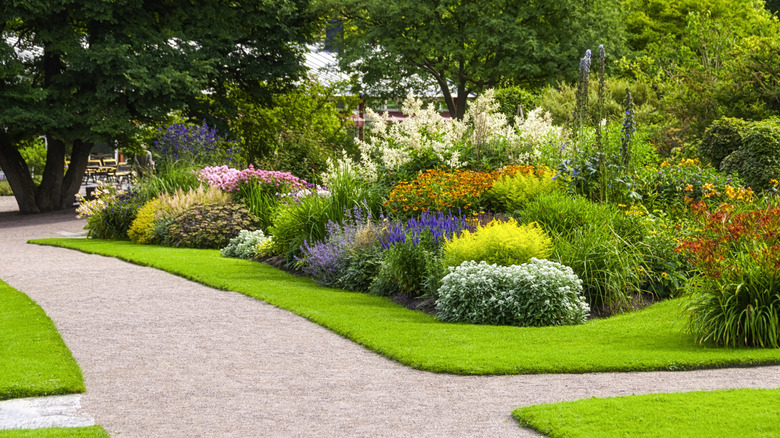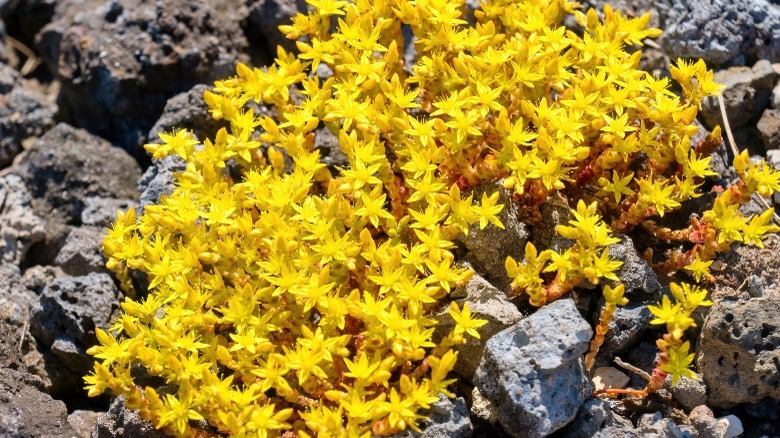The Golden Flower Some Gardeners Grow To Control Weeds (& Does It Actually Work?)
Dealing with weeds is a constant battle in even the best-kept landscapes. While the choices seem to be limited to expensive mulches, toxic chemicals, or hand-pulling, there's another option: you can use a ground cover to prevent pesky weeds in the garden. But do ground covers actually work to keep weeds out? Yes, some do. Stringy stonecrop (Sedum sarmentosum) and biting stonecrop (Sedum acre) are two varieties of goldmoss that make a great choice. Stringy Stonecrop is a looser, spreading plant with a mature height of 4 inches tall. Biting Stonecrop grows as a thick mat with a mature height of 3 inches and a deeper root system. They are fast spreaders, giving you a lovely ground cover in a fairly short amount of time.
Besides providing cover and protection against weeds, both varieties of goldmoss have tiny yellow flowers that appear each summer. Picture a field of abundant star-shaped yellow flowers peeking through stunning greenery replacing a former bed of weeds. All with little effort needed from you. This ground cover can be grown in USDA zones 3 to 8 and works well in rock gardens. It will need some sun but very little watering. If you have exceptional soil, goldmoss Sedum may become an aggressive spreader, which makes it the perfect choice if you're looking to replace grass with a ground cover. Keep it within borders by pulling the roots from areas you want the plants to stay out of.
How to grow goldmoss sedum
So how do you plant and maintain this amazing ground cover? Like any plant, it's all about location. Because both types of goldmoss grow best in full sun, be sure you plant them in an area that gets at least 6 hours of sun per day. Don't stress about trying to improve your soil with peat or by adding fertilizer. It isn't picky about the type of soil it grows in, making it a versatile, low-maintenance ground cover in most garden environments, including sandy or rocky soils. Goldmoss doesn't need watering often, which is why it's favored in areas prone to drought.
Planted in the spring or early fall, goldmoss does as well in four season climates as it does in hotter areas of the country. It has thrived in Arlington National Cemetery next to John F. Kennedy's grave for over 50 years. You also won't need to worry about pests or diseases, as it tends to be a particularly hardy, disease-free, and pest-free plant. Maintaining it involves an occasional watering during exceptionally dry periods, but after planting you can leave it alone, sit back, and watch it grow. Considering its low maintenance and favorability compared to invasive ground covers, goldmoss is a fantastic choice to keep weeds out of your garden while adding gorgeous curb appeal to your landscape.

